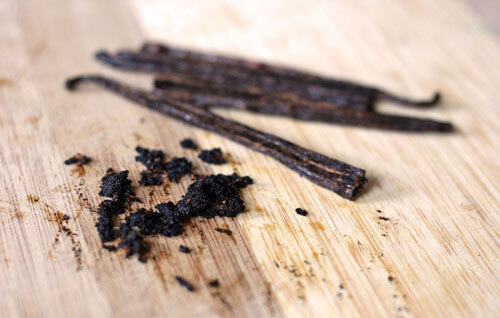
The market for vanilla beans – the commodity used to flavour everything from ice cream to soft drinks – is booming, with prices more than tripling over the past 12 months. Normally this would be good news for world producers because it allows them to sell their product at a higher cost (and to more people).
Here’s the rub: with demand far outpacing production capacity, low-cost producers have taken short-cuts in processing vanilla beans, leading to a sharp decline in quality. Nowhere has this been more apparent than in Madagascar, the African island nation that supplies more than half the world’s vanilla beans, reports Nikolas Xenofontos, director of risk management at easyMarkets.
“The branding of Madagascar vanilla in the international market is threatened,” Commerce Minister Henri Rabesahala reported to Bloomberg News recently. There are good reasons for Rabeshala to be concerned about Madagascar’s vanilla bean market. They feed into a much larger agricultural sector that drives about 24% of Madagascar’s gross domestic product (GDP) and employs more than 70% of its labour force. Vanilla, coffee, cacao, tobacco and other agricultural products contribute more than 70% to the country’s export earnings.
Madagascar has been caught off guard by the latest surge in vanilla demand. After a decade of low vanilla prices, production declined across the globe. Faced with a dwindling market, farmers in countries such as China, Indonesia and Uganda switched to other crops. Meanwhile, Madagascar remained a low-cost producer, enjoying a comparative advantage of low labour costs.
However, as prices rebounded, Madagascan farmers began harvesting vanilla beans sooner than normal. Rather than curing and drying them, they packaged them in vacuum-sealed containers. While this form of packaging allowed producers to wait for higher prices as global supplies ran dry, it also diminished the quality of the product. No surprise then that consumers now complain about a loss of flavour and aroma. According to Bloomberg, this form of production “was almost like picking wine grapes before their time.” That’s because the primary compound responsible for the flavour and aroma – vanillin – wasn’t able to fully develop under the new production regime.
To make matters worse, Madagascar is currently facing a money laundering problem tied to its rosewood timber industry. Rosewood is a highly sought after red-hued timber that is used to produce luxury furniture and musical instruments. Since banning unlicensed logging in 2010, Madagascar has witnessed a huge spike in trafficking. Redwood smugglers have reportedly used their proceeds to buy green vanilla from local farmers that can then be sold legally to generate real income.
In an effort to protect its vanilla bean industry and ensure high quality production, the Madagascan government has blocked exports of immature green vanilla and imposed a hard ban on all vacuum-packed pods, according to Mr. Rabesahala.
The government has also increased the power of security organizations to act against smugglers and low-cost producers. As part of its commitment to ensuring high quality exports, the Madagascan government is working with industry to establish an inventory of vanilla bean growers and suppliers.
The National Vanilla Platform, a joint industry and government body established this past December, is putting together an inventory of an estimated 100,000 vanilla bean producers, collectors and exporters. “We are very serious about this,” Rabesahala said. “We’re not joking. We don’t want to jeopardize the next campaign.”
Madagascar’s harvest for the year, which begins in July, is expected to rise to about 2,000 tonnes from around 1,200 to 1,600 tonnes in 2015, according to Rabesahala. According to commodity analysts, there’s no guarantee that higher prices will persist. With higher price points now entering their fourth year, more producers are entering the market. This could lead to a huge supply surge in vanilla beans, which could drive prices down in the medium term.
To get a sense of just how volatile vanilla bean prices can get, recall that in 2012 the commodity fell from more than $500 to $15 in just a few months. Madagascan producers routinely complain about volatile prices. According to a 2013 study by the 2013 Catholic Relief Services (CRS), producers cited price volatility as the biggest obstacle to earning a stable livelihood in the industry.
Overall, vanilla production is considered expensive, so much so that the vast majority of all vanilla used in the market is synthetic. This is what the CRS had to say about it in its 2013 report: “Because vanilla production is low and the product is expensive, 98 percent of all vanilla used as a flavor or fragrance is synthetic. This is leading to a misuse of “natural vanilla” terminology in product labeling, whereby companies may be using natural vanillin substitutes instead of vanilla beans. This type of labeling is deceptive to consumers, who may think they are buying products with genuine vanilla bean ingredients.”
Madagascan vanilla bean farmer Jean Bruno expressed his frustration about price volatility to CNN way back in 2010. “Yes, it is difficult to grow, to tend it day after day. But the worst part is the price, it’s miserable.”


